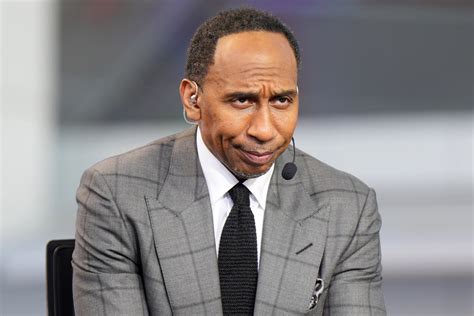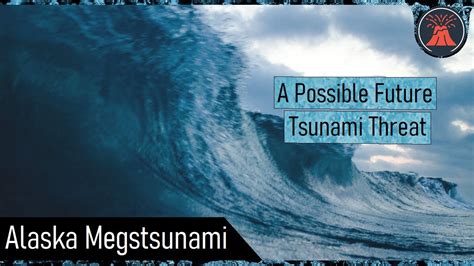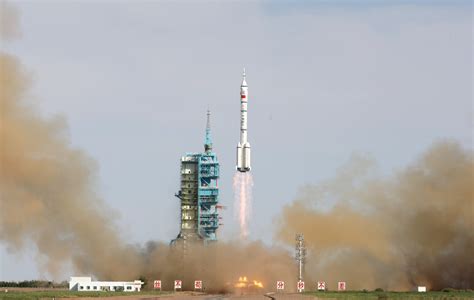
Stephen A. Smith publicly criticized CNN anchor Laura Coates for what he perceived as disrespectful behavior during an appearance on her CNN show. Smith expressed his displeasure on a recent episode of “The Stephen A. Smith Show,” stating Coates displayed a dismissive attitude towards him and his ESPN colleagues.
Stephen A. Smith, the prominent ESPN personality, has publicly voiced his displeasure with CNN anchor Laura Coates following a recent appearance on her show, “Laura Coates Live.” Smith accused Coates of exhibiting a dismissive and disrespectful demeanor towards him and his ESPN colleagues, igniting a debate about professional conduct and media etiquette.
The critique surfaced on a recent episode of “The Stephen A. Smith Show,” where Smith dedicated a segment to address his experience on Coates’ program. According to Smith, the encounter left him feeling undervalued and prompted him to speak out against what he perceived as unprofessional behavior.
“I went on Laura Coates’ show, and I wasn’t feeling her,” Smith stated emphatically during his podcast. He elaborated on his issues with Coates’ conduct, emphasizing what he perceived as a lack of respect. “I didn’t appreciate the way that she was addressing myself and my colleagues at ESPN.”
Smith did not provide specific instances of Coates’ alleged disrespect, but his strong reaction indicates the perceived offense was significant enough to warrant a public response. This incident raises questions about the dynamics between personalities from different media outlets and the expectations for respectful dialogue during televised interviews.
The background to this dispute involves Smith’s appearance on “Laura Coates Live,” where he presumably discussed topics related to sports, current events, or his career. While the specific subject matter of the interview remains undisclosed, the tension between Smith and Coates appears to have stemmed from the manner in which Coates conducted the conversation.
Smith’s prominence in the sports media world adds weight to his criticism. As a leading voice on ESPN’s “First Take” and host of his own podcast, Smith wields considerable influence and his opinions carry significant weight with audiences and industry peers alike. His decision to address the issue publicly underscores the seriousness of his concerns.
Coates, a former federal prosecutor and legal analyst, joined CNN in 2016 and has since become a prominent figure at the network. Her show, “Laura Coates Live,” covers a range of legal and political topics, and she is known for her insightful commentary and legal expertise. This incident with Smith could potentially impact her reputation and raise questions about her interviewing style.
Smith’s comments have sparked a wave of reactions across social media and within media circles. Some observers have criticized Smith for airing his grievances publicly, suggesting he should have addressed the issue privately with Coates. Others have supported Smith, arguing that his concerns are valid and that public figures should be held accountable for their behavior.
The incident highlights the complexities of media interactions, where personalities from different backgrounds and affiliations often engage in public discourse. The expectations for professional conduct and mutual respect are paramount, and any perceived breach of these standards can lead to conflict and controversy.
Smith’s decision to address his concerns publicly suggests that he believes the issue warrants broader attention. His willingness to confront Coates directly reflects his outspoken personality and his commitment to defending his reputation and the reputation of his ESPN colleagues.
The broader implications of this dispute extend beyond the personal dynamic between Smith and Coates. It raises questions about the role of media personalities in shaping public discourse and the importance of maintaining civility and respect in public forums. As media landscapes continue to evolve, the need for professional conduct and respectful dialogue becomes increasingly critical.
“I’m just saying, I wasn’t feeling her,” Smith reiterated, emphasizing his dissatisfaction with the encounter. His comments reflect a deep-seated concern about the way he and his colleagues were treated, suggesting that the issue goes beyond a simple disagreement.
The incident serves as a reminder that even in the high-pressure world of media, basic principles of respect and professionalism should always prevail. The way in which Smith and Coates navigate this situation will likely have broader implications for their respective careers and the media industry as a whole.
As the story develops, it remains to be seen whether Coates will respond to Smith’s criticism and whether the two personalities will be able to resolve their differences. Regardless of the outcome, the incident has already sparked a significant debate about media ethics and the importance of respectful communication.
Smith’s public rebuke of Coates is a notable event, given their respective positions in the media landscape. Smith’s influence in sports media is undeniable, and Coates’ rising profile at CNN makes this a potentially significant clash of personalities. The fallout from this incident could have lasting repercussions for both individuals and their respective networks.
The incident also underscores the sensitivity surrounding issues of respect and representation in the media. Smith’s concerns about the way he and his ESPN colleagues were treated reflect broader anxieties about fairness and equity in media interactions. These issues are particularly relevant in an era of heightened awareness about diversity and inclusion.
Smith’s approach to addressing the issue publicly is consistent with his outspoken and confrontational style. He has never been one to shy away from controversy, and his willingness to speak his mind has both garnered him praise and drawn criticism. In this case, his decision to address the issue on his podcast suggests that he believes it is important to hold others accountable for their behavior.
Coates, on the other hand, has generally maintained a more measured and diplomatic public persona. As a legal analyst and television host, she is known for her thoughtful commentary and her ability to navigate complex issues with nuance and precision. It remains to be seen how she will respond to Smith’s criticism and whether she will attempt to address the issue privately or publicly.
The broader context of this dispute involves the increasingly competitive media landscape, where personalities from different networks and platforms often vie for attention and influence. In this environment, tensions can arise, and conflicts can escalate quickly. The incident between Smith and Coates serves as a reminder of the challenges of navigating these dynamics and the importance of maintaining professional standards.
Smith’s decision to single out Coates for criticism also raises questions about the role of race and gender in media interactions. While Smith did not explicitly mention these factors in his comments, they are often implicit in discussions about power dynamics and representation. It is important to consider how these factors may have influenced the interaction between Smith and Coates and how they may shape the public’s perception of the dispute.
The incident also highlights the challenges of maintaining civility and respect in an era of heightened political polarization. As media outlets become increasingly partisan and personalities take increasingly strident positions, it becomes more difficult to engage in constructive dialogue and find common ground. The incident between Smith and Coates serves as a reminder of the importance of resisting these trends and striving for a more civil and respectful public discourse.
As the story unfolds, it will be important to consider the perspectives of all parties involved and to avoid making hasty judgments or drawing premature conclusions. The incident between Smith and Coates is complex and multifaceted, and it requires careful analysis and thoughtful consideration.
Smith’s comments have undoubtedly put Coates in a difficult position. As a prominent figure at CNN, she is likely under pressure to respond to the criticism in a way that is both professional and respectful. However, she also has a responsibility to defend her reputation and to ensure that her side of the story is heard.
The incident also raises questions about the role of media outlets in addressing disputes between their personalities. CNN may feel compelled to intervene in the situation to ensure that it does not escalate further and to protect the reputations of both Coates and the network. However, it is also important for CNN to respect the autonomy of its personalities and to avoid interfering in their personal affairs.
The broader implications of this dispute extend beyond the media industry. It raises questions about the nature of public discourse and the importance of holding individuals accountable for their behavior. In an era of social media and instant communication, it is easy for conflicts to escalate quickly and for reputations to be damaged irreparably. The incident between Smith and Coates serves as a reminder of the need for careful consideration and thoughtful communication in all aspects of public life.
Smith’s public critique of Coates is a significant event that has the potential to have lasting repercussions. It underscores the importance of maintaining professional standards in the media industry and the challenges of navigating complex relationships in a competitive environment. As the story develops, it will be important to follow the perspectives of all parties involved and to consider the broader implications of the dispute.
In the aftermath of Smith’s comments, Coates has remained silent, neither confirming nor denying the allegations. This silence has fueled further speculation and debate about the incident. Some observers have interpreted her silence as an admission of guilt, while others have argued that she is simply taking a measured approach to the situation.
Regardless of her reasons for remaining silent, Coates’ decision not to respond has allowed Smith’s version of events to dominate the narrative. This has put her at a disadvantage and made it more difficult for her to defend her reputation.
The incident has also raised questions about the role of ESPN in supporting Smith’s public critique of Coates. While ESPN has not issued an official statement on the matter, some observers have speculated that the network may have tacitly approved of Smith’s decision to speak out. This would be consistent with ESPN’s history of allowing its personalities to express strong opinions on a variety of topics.
However, ESPN’s decision to allow Smith to criticize a CNN anchor could also be seen as a risky move, as it could damage the network’s relationship with CNN and other media outlets. It remains to be seen whether ESPN will take any further action to address the situation.
The broader context of this dispute involves the ongoing rivalry between ESPN and CNN, two of the most prominent media organizations in the world. The two networks compete for viewers and advertisers, and they often engage in subtle forms of one-upmanship. The incident between Smith and Coates could be seen as another manifestation of this rivalry.
The incident also highlights the challenges of maintaining objectivity and neutrality in the media. As media outlets become increasingly partisan and personalities take increasingly strident positions, it becomes more difficult to present information in a fair and unbiased manner. The incident between Smith and Coates serves as a reminder of the importance of striving for objectivity and neutrality, even in the face of strong emotions.
As the story unfolds, it will be important to consider the perspectives of all parties involved and to avoid making hasty judgments or drawing premature conclusions. The incident between Smith and Coates is complex and multifaceted, and it requires careful analysis and thoughtful consideration.
Smith’s public critique of Coates has undoubtedly damaged their relationship. It is unlikely that the two personalities will be able to work together in the future, and they may even harbor resentment towards each other.
The incident could also have a chilling effect on media interactions in general. Personalities may be more hesitant to express strong opinions or engage in controversial discussions, for fear of being publicly criticized or ostracized.
However, the incident could also have a positive effect, by prompting media personalities to be more mindful of their behavior and to strive for greater respect and civility in their interactions. It remains to be seen what the long-term consequences of the incident will be.
Ultimately, the incident between Smith and Coates serves as a reminder of the importance of maintaining professional standards in the media industry and of striving for a more civil and respectful public discourse.
The lack of specific details regarding the incident remains a significant point of contention. Smith’s reluctance to elaborate on the precise actions or statements that he found disrespectful leaves room for interpretation and speculation. This ambiguity complicates efforts to fully understand and assess the validity of his claims.
Without concrete examples, it is difficult to determine whether Coates’ behavior was genuinely inappropriate or whether Smith’s reaction was an overreaction. The absence of specific evidence also makes it challenging for Coates to defend herself against the accusations.
The broader context of media interactions is also relevant to this discussion. The media landscape is often characterized by competition, pressure, and the pursuit of attention. These factors can contribute to tensions and conflicts between personalities from different outlets.
In this environment, it is important to maintain a sense of perspective and to avoid making snap judgments based on limited information. It is also crucial to recognize that perceptions of disrespect can be subjective and influenced by a variety of factors, including personal biases and cultural differences.
As the story unfolds, it will be essential to gather as much information as possible and to consider all sides of the issue before forming a definitive opinion. The incident between Smith and Coates is complex and nuanced, and it requires careful analysis and thoughtful consideration.
FAQ Section:
1. What specifically did Stephen A. Smith find disrespectful about Laura Coates’ behavior?
According to Smith, he “wasn’t feeling her” and “didn’t appreciate the way that she was addressing myself and my colleagues at ESPN.” However, he did not provide specific examples of what Coates said or did that he found disrespectful. This lack of detail makes it difficult to fully understand the nature of his complaint.
2. Has Laura Coates responded to Stephen A. Smith’s criticism?
As of the latest reports, Laura Coates has not publicly responded to Stephen A. Smith’s criticism. Her silence has fueled speculation and debate about the incident.
3. What could be the potential impact of this public dispute on both Stephen A. Smith and Laura Coates’ careers?
The incident could potentially damage their reputations and relationships with other media professionals. It could also lead to increased scrutiny of their behavior and interactions in the future. However, it is also possible that the incident will have little long-term impact on their careers.
4. Did the incident occur during a live broadcast, or was it during the taping of a segment?
The details about the exact setting are not available; however, the incident occurred during an appearance on Laura Coates’ CNN show. Whether this interaction was live or pre-taped is not specified in the news source.
5. What implications does this incident have for media ethics and professional conduct within the industry?
This incident highlights the importance of maintaining professional standards and respectful communication in the media industry. It serves as a reminder that public figures are held to a high standard of conduct and that their actions can have a significant impact on their reputations and relationships with others. The incident also raises questions about the role of media outlets in addressing disputes between their personalities.









